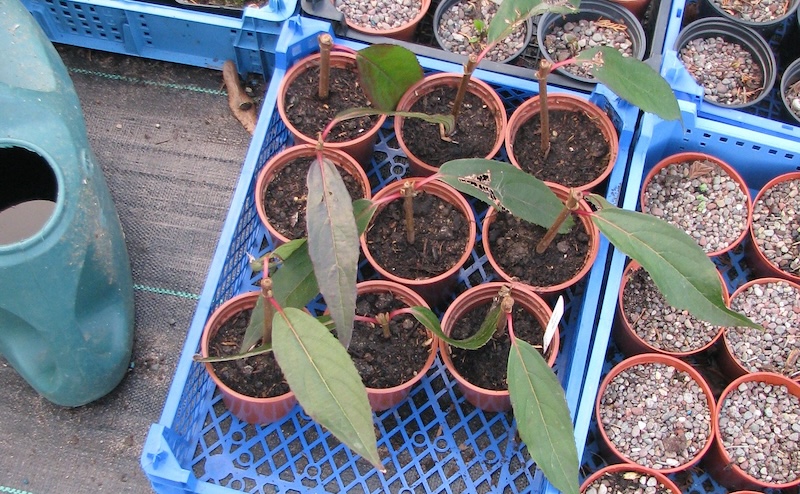Viburnum is a diverse shrub group often featuring showy foliage, fragrant flowers, bold berries, and colorful stems. Evergreen or deciduous, these shrubs come in various shapes and sizes and grow in zones 2 through 11. Viburnum is easy to maintain, making it a valuable addition to a landscape. Easily propagate viburnum via stem cuttings to add more color and texture to your space. The entire process of propagating viburnum often takes several months, so give yourself time, but know that this shrub is worth the wait.

Photo by peganum, cropped, Flickr, Copyright CC BY-SA 2.0 DEED
Methods To Propagate Viburnum
Stem cuttings are the easiest method to propagate viburnum. This perennial can be propagated through seed, but the process is very time and labor intensive. Viburnum can be propagated through softwood and hardwood cuttings. Trim a stem section and remove the lower leaves to expose the nodes. Plant the cutting and roots will grow from the nodes after one to two months.
What You Need To Propagate Viburnum
Use clean, sharp pruning shears to take cuttings from viburnum. Cuttings often root easily in a potting mix. The ideal mix should include peat moss and perlite or similar components for drainage. Viburnum cuttings taken early in the growing season can be rooted outdoors in a garden bed, but late-season cuttings are best rooted indoors in a container. Rooting hormone will help the cutting set roots, but it is not strictly necessary.
Best Time To Propagate Viburnum
Softwood viburnum cuttings can be taken in the spring. Springtime cuttings will root during the growing season and can be transplanted outdoors by late summer, giving the plant time to acclimate before winter. Hardwood viburnum cuttings taken in the fall can be rooted indoors in a warm environment. Hardwood cuttings can take months to set roots and will often be ready to transition to the outside by spring.
Steps To Propagate Viburnum
Step 1 - Trim a stem piece using sharp pruning shears. Softwood cuttings should measure 6 inches long and can be taken mid- to late-spring. Hardwood cuttings should be 10 inches long and can be taken in the fall.
Step 2 - Make an angled cut on the end of the cutting and remove the lower leaves. Dip the cut end in rooting hormone if using.
Step 3 - Prepare a container with rich, well-drained potting mix.
Step 4 - Place the cut end in the prepared container.
Step 5 - Place the viburnum cutting in a warm spot in indirect light and water when the top couple of inches of potting mix are dry.
Step 6 - Softwood cuttings will have roots in about six weeks, while hardwood cuttings may take several months to establish roots.
Caring For Young Viburnum Cuttings
Viburnum cuttings need partial shade or indirect light to avoid drying out. Water when the top few inches of the potting mix feels dry. Softwood cuttings often form roots in roughly six weeks, while hardwood cuttings need longer. Gently tugging on the stem and feeling resistance lets you know if a cutting has roots. Give the cutting at least several more weeks after the roots grow before transplanting outdoors, and wait until there is no longer a threat of frost.
 |
Author Alison Cotsonas - Published 12-13-2023 |
